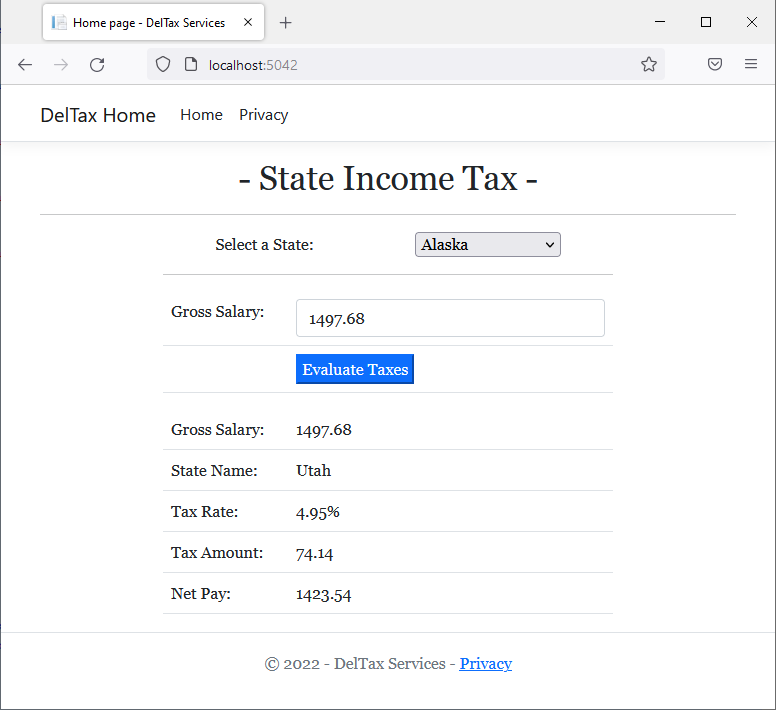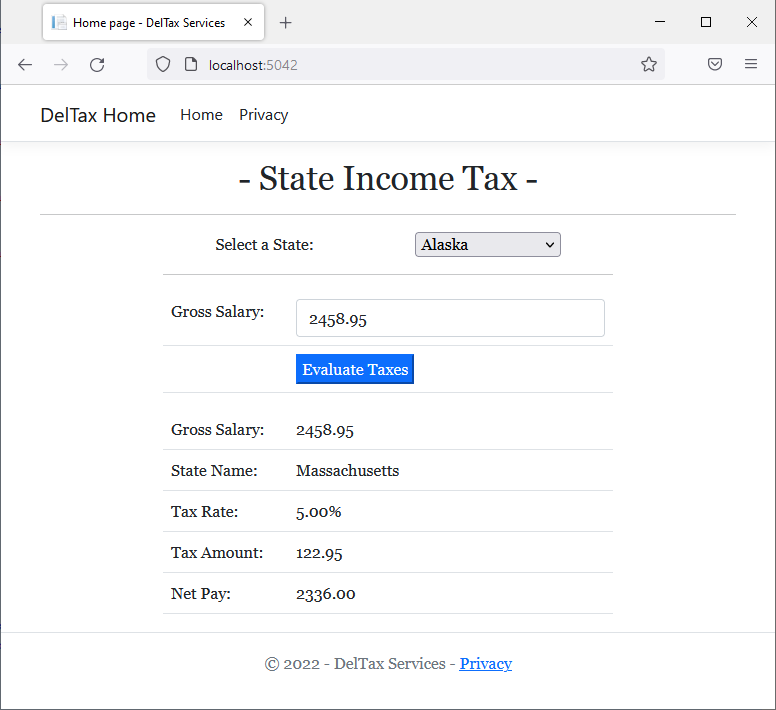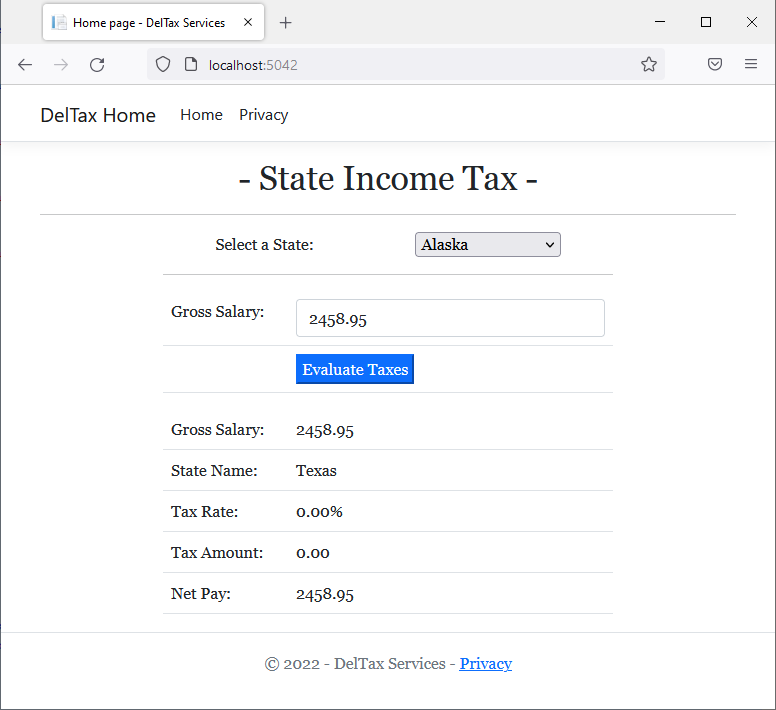Conditional Disjunctions
Conditional Disjunctions
Boolean Disjunctions
A Boolean disjunction is a conditional statement where you combine more than one condition but only one of the conditions needs to be true for the whole operation to be true. This operation is performed using the Boolean "OR" operator. The primary formula to follow is:
condition1 OR condition2
The operation works as follows:
The operation can be resumed as follows:
| Condition 1 | Condition 2 | Condition 1 AND Condition 2 | Condition 1 OR Condition 2 |
| False | False | False | False |
| False | True | False | True |
| True | False | False | True |
| True | True | True | True |
To perform this operation in C#, you can use an operator represented as ||. As seen with the Boolean conjunction, the formula for a Boolean disjunction is:
condition1 || condition2
We already saw that a condition is formulated as:
operand1 Boolean-operator operand2
As a result, a Boolean disjunction can be formulated as follows:
operand1 operator1 operand2 || operand3 operator2 operand4
![]() Practical Learning: Introducing Boolean Conjunctions
Practical Learning: Introducing Boolean Conjunctions
body {
}
.delimiter { margin: auto;
width: 450px; }
.common-font { font-family: Georgia, Garamond, 'Times New Roman', serif; }<!DOCTYPE html>
<html lang="en">
<head>
<meta charset="utf-8" />
<meta name="viewport" content="width=device-width, initial-scale=1.0" />
<title>@ViewData["Title"] - DelTax Services</title>
<link rel="stylesheet" href="~/lib/bootstrap/dist/css/bootstrap.min.css" />
<link rel="stylesheet" href="~/css/site.css" asp-append-version="true" />
<link rel="stylesheet" href="~/TaxPreparation03.styles.css" asp-append-version="true" />
<link rel="stylesheet" href="~/css/TaxPreparation.css" asp-append-version="true" />
</head>
<body>
<header>
<nav class="navbar navbar-expand-sm navbar-toggleable-sm navbar-light bg-white border-bottom box-shadow mb-3">
<div class="container">
<a class="navbar-brand" asp-area="" asp-page="/Index">DelTax Home</a>
<button class="navbar-toggler" type="button" data-bs-toggle="collapse" data-bs-target=".navbar-collapse" aria-controls="navbarSupportedContent"
aria-expanded="false" aria-label="Toggle navigation">
<span class="navbar-toggler-icon"></span>
</button>
<div class="navbar-collapse collapse d-sm-inline-flex justify-content-between">
<ul class="navbar-nav flex-grow-1">
<li class="nav-item">
<a class="nav-link text-dark" asp-area="" asp-page="/Index">Home</a>
</li>
<li class="nav-item">
<a class="nav-link text-dark" asp-area="" asp-page="/Privacy">Privacy</a>
</li>
</ul>
</div>
</div>
</nav>
</header>
<div class="container">
<main role="main" class="pb-3">
@RenderBody()
</main>
</div>
<footer class="border-top footer text-muted">
<div class="container">
<p class="text-center common-font">© 2022 - DelTax Services - <a asp-area="" asp-page="/Privacy">Privacy</a></p>
</div>
</footer>
<script src="~/lib/jquery/dist/jquery.min.js"></script>
<script src="~/lib/bootstrap/dist/js/bootstrap.bundle.min.js"></script>
<script src="~/js/site.js" asp-append-version="true"></script>
@await RenderSectionAsync("Scripts", required: false)
</body>
</html>Disjunction Equality
Remember that, in a Boolean conjunction or disjunction, you use two conditions and each condition performs its own comparison. As we saw with conjunctions, each condition of a disjunction can use its own variable for its comparison. Here is an example:
@page
@model Valuable.Pages.ExerciseModel
@{
string degree = "y";
bool certified = false;
string strDecision = "";
if( degree == "y" || certified == true )
strDecision = "Congratulations: We need to schedule the next interview (Human Resources) for you.";
else
strDecision = "This job requires either a college degree or a professional certification in application programming.";
}
<h3>Employment Application</h3>
<hr />
<pre>Does the candidate hold a college degree? @degree
Is the candidate a certified programmer (Microsoft, Oracle, etc)? @certified
--------------------------------------------------------------------------------------------
Decision: @strDecision
============================================================================================</pre>
This would produce:
Employment Application Does the candidate hold a college degree? y Is the candidate a certified programmer (Microsoft, Oracle, etc)? False ---------------------------------------------------------------------------- Decision: Congratulations: We need to schedule the next interview (Human Resources) for you.
![]() Practical Learning: Introducing Logical Disjunctions
Practical Learning: Introducing Logical Disjunctions
@page
@model IndexModel
@{
ViewData["Title"] = "Home page";
}
@{
string strNetPay = "";
string strTaxRate = "";
string strTaxAmount = "";
string strStateName = "";
string strGrossSalary = "";
if (Request.HasFormContentType)
{
double taxRate = 0.00;
double grossSalary = double.Parse(Request.Form["txtGrossSalary"]);
strStateName = Request.Form["selStates"];
if( (strStateName == "Illinois") || (strStateName == "Utah") )
taxRate = 4.95;
double taxAmount = grossSalary * taxRate / 100.00;
double netPay = grossSalary - taxAmount;
strGrossSalary = $"{grossSalary:F}";
strTaxRate = $"{taxRate/100:P}";
strTaxAmount = $"{taxAmount:F}";
strNetPay = $"{(grossSalary - taxAmount):F}";
}
}
<h1 class="text-center common-font">- State Income Tax -</h1>
<hr />
<div class="delimiter common-font">
<form name="frmTaxPreparation" method="post">
<table align="center">
<tr>
<td style="width: 200px">Select a State:</td>
<td>
<select id="selStates" name="selStates">
<option value="Alaska">Alaska</option>
<option value="Arkansas">Arkansas</option>
<option value="Colorado">Colorado</option>
<option value="Florida">Florida</option>
<option value="Georgia">Georgia</option>
<option value="Illinois">Illinois</option>
<option value="Indiana">Indiana</option>
<option value="Kentucky">Kentucky</option>
<option value="Massachusetts">Massachusetts</option>
<option value="Michigan">Michigan</option>
<option value="Missouri">Missouri</option>
<option value="Mississippi">Mississippi</option>
<option value="Nevada">Nevada</option>
<option value="New Hampshire">New Hampshire</option>
<option value="North Carolina">North Carolina</option>
<option value="Pennsylvania">Pennsylvania</option>
<option value="South Dakota">South Dakota</option>
<option value="Tennessee">Tennessee</option>
<option value="Texas">Texas</option>
<option value="Utah">Utah</option>
<option value="Washington">Washington</option>
<option value="Wyoming">Wyoming</option>
</select>
</td>
</tr>
</table>
<hr />
<table class="table">
<tr>
<td width="125"><label for="txtGrossSalary">Gross Salary:</label></td>
<td><input type="text" id="txtGrossSalary" name="txtGrossSalary" value="@strGrossSalary" class="form-control" /></td>
</tr>
<tr>
<td></td>
<td class="pcenter"><input type="submit" value="Evaluate Taxes" class="btn-primary" /></td>
</tr>
</table>
</form>
<table class="table">
<tr>
<td width="125">Gross Salary:</td>
<td>@strGrossSalary</td>
</tr>
<tr>
<td>State Name:</td>
<td>@strStateName</td>
</tr>
<tr>
<td>Tax Rate:</td>
<td>@strTaxRate</td>
</tr>
<tr>
<td>Tax Amount:</td>
<td>@strTaxAmount</td>
</tr>
<tr>
<td>Net Pay:</td>
<td>@strNetPay</td>
</tr>
</table>
</div>
A Disjunction for Non-Equivalence
As with a conjunction, in a Boolean disjunction, one or both of the conditions can use an operator that is neither equality (==) nor non-equality (!=). For one of those other operator, you can precede the operator with the is keyword. Here is an example:
@page
@model Valuable.Pages.ExerciseModel
@{
int security = 3;
int education = 1;
string strDecision = "";
if( security is >= 2 || education is > 3 )
strDecision = "Congratulations: Welcome on board.";
else
strDecision = "Well... We will get back to you...";
}
<h3>Employment Application</h3>
<hr />
<pre>Job Requirements Evaluation
======================================================
Levels of Security Clearance:
0. Unknown or None
1. Non-Sensitive
2. National Security - Non-Critical Sensitive
3. National Security - Critical Sensitive
4. National Security - Special Sensitive
------------------------------------------------------
Levels of Education:
1. Kindergarten or Elementary School
2. High School
3. Some College or Associate Degree
4. Bachelor's Degree
5. Graduate Degree
======================================================
After candidate's evaluation
Security Level: @security
Level of Education: @education
======================================================
Decision: @strDecision
======================================================</pre>
This would produce:
Employment Application Job Requirements Evaluation ====================================================== Levels of Security Clearance: 0. Unknown or None 1. Non-Sensitive 2. National Security - Non-Critical Sensitive 3. National Security - Critical Sensitive 4. National Security - Special Sensitive ------------------------------------------------------ Levels of Education: 1. Kindergarten or Elementary School 2. High School 3. Some College or Associate Degree 4. Bachelor's Degree 5. Graduate Degree ====================================================== After candidate's evaluation Security Level: 3 Level of Education: 1 ====================================================== Decision: Congratulations: Welcome on board. ======================================================
In some cases, you can use the same variable for both conditions that use the "Less Than" (<), the "Less Than or Equal" (<=), the "Greater Than" (>), or the "Greater Than or Equal" (>=) operator. To make to make your code easy to read, you can use an operator named or. This operator is combined with the is operator. The formula to follow is:
operand is condition1 or condition2
Start with variable that both conditions use. The variable must be followed by the is operator. Then formulate each conditional using the "Less Than" (<), the "Less Than or Equal" (<=), the "Greater Than" (>), or the "Greater Than or Equal" (>=) operator. Separate both conditions with the or operator. Here is an example:
@page
@model Valuable.Pages.ExerciseModel
@{
int security = 3;
int education = 3;
string strDecision = "";
if( security is >= 2 or > 3 )
strDecision = "Congratulations: Welcome on board.";
else
strDecision = "Well... We will get back to you...";
}
<h3>Employment Application</h3>
<hr />
<pre>Job Requirements Evaluation
======================================================
Levels of Security Clearance:
0. Unknown or None
1. Non-Sensitive
2. National Security - Non-Critical Sensitive
3. National Security - Critical Sensitive
4. National Security - Special Sensitive
------------------------------------------------------
Levels of Education:
1. Kindergarten or Elementary School
2. High School
3. Some College or Associate Degree
4. Bachelor's Degree
5. Graduate Degree
======================================================
Candidate's Evaluation:
Level of Security Clearance: @security
Level of Education: @education
------------------------------------------------------
Decision: @strDecision
======================================================</pre>
This would produce:
Employment Application Job Requirements Evaluation ====================================================== Levels of Security Clearance: 0. Unknown or None 1. Non-Sensitive 2. National Security - Non-Critical Sensitive 3. National Security - Critical Sensitive 4. National Security - Special Sensitive ------------------------------------------------------ Levels of Education: 1. Kindergarten or Elementary School 2. High School 3. Some College or Associate Degree 4. Bachelor's Degree 5. Graduate Degree ====================================================== Candidate's Evaluation: Level of Security Clearance: 3 Level of Education: 3 ------------------------------------------------------ Decision: Congratulations: Welcome on board. ======================================================
To make your code easy to read, you can include each condition in its own parentheses. This can be done as follows:
@page
@model Valuable.Pages.ExerciseModel
@{
int security = 1;
int education = 4;
string strDecision = "";
if( security is (>= 2) or (> 3) )
strDecision = "Congratulations: Welcome on board.";
else
strDecision = "Well... We will get back to you...";
}
<h3>Employment Application</h3>
<hr />
<pre>Job Requirements Evaluation
======================================================
Levels of Security Clearance:
0. Unknown or None
1. Non-Sensitive
2. National Security - Non-Critical Sensitive
3. National Security - Critical Sensitive
4. National Security - Special Sensitive
------------------------------------------------------
Levels of Education:
1. Kindergarten or Elementary School
2. High School
3. Some College or Associate Degree
4. Bachelor's Degree
5. Graduate Degree
======================================================
Candidate's Evaluation:
Level of Security Clearance: @security
Level of Education: @education
------------------------------------------------------
Decision: @strDecision
======================================================</pre>
This would produce:
Employment Application Job Requirements Evaluation ====================================================== Levels of Security Clearance: 0. Unknown or None 1. Non-Sensitive 2. National Security - Non-Critical Sensitive 3. National Security - Critical Sensitive 4. National Security - Special Sensitive ------------------------------------------------------ Levels of Education: 1. Kindergarten or Elementary School 2. High School 3. Some College or Associate Degree 4. Bachelor's Degree 5. Graduate Degree ====================================================== Candidate's Evaluation: Level of Security Clearance: 1 Level of Education: 4 ------------------------------------------------------ Decision: Well... We will get back to you... ======================================================
Combining Disjunctions
You can create a conditional statement that includes as many disjunctions as you want. The formula to follow is:
condition1 || condition2 || . . . || condition_n
The rule is: If any one of the individual operations is true, the whole operation is true. The whole operation is false only if all the operations are false. Here is an example that uses three conditions:
@page
@model Valuable.Pages.ExerciseModel
@{
int level = 3;
string strDecision = "";
if( level == 2 || level == 3 || level == 4 )
strDecision = "Congratulations: Welcome on board.";
else
strDecision = "Well... We will get back to you...";
}
<h3>Employment Application</h3>
<hr />
<pre>================================================================
Levels of Security Clearance:
0. Unknown or None
1. Non-Sensitive
2. National Security - Non-Critical Sensitive
3. National Security - Critical Sensitive
4. National Security - Special Sensitive
================================================================
Candidate's Evaluation:
Level of Security Clearance: @level
----------------------------------------------------------------
Decision: @strDecision
================================================================</pre>
This would produce:
Employment Application ================================================================ Levels of Security Clearance: 0. Unknown or None 1. Non-Sensitive 2. National Security - Non-Critical Sensitive 3. National Security - Critical Sensitive 4. National Security - Special Sensitive ================================================================ Candidate's Evaluation: Level of Security Clearance: 3 ---------------------------------------------------------------- Decision: Congratulations: Welcome on board. ================================================================
![]() Practical Learning: Introducing Logical Disjunctions
Practical Learning: Introducing Logical Disjunctions
@page
@model IndexModel
@{
ViewData["Title"] = "Home page";
}
@{
string strNetPay = "";
string strTaxRate = "";
string strTaxAmount = "";
string strStateName = "";
string strGrossSalary = "";
if (Request.HasFormContentType)
{
double taxRate = 0.00;
double grossSalary = double.Parse(Request.Form["txtGrossSalary"]);
strStateName = Request.Form["selStates"];
if( (strStateName == "Illinois") || (strStateName == "Utah") )
taxRate = 4.95;
else if ((strStateName == "Kentucky") || (strStateName == "Massachusetts") || (strStateName == "New Hampshire"))
taxRate = 5.00;
else if ((strStateName == "Florida") || (strStateName == "Nevada") || (strStateName == "Texas") || (strStateName == "Washington") || (strStateName == "Wyoming"))
taxRate = 0.00;
double taxAmount = grossSalary * taxRate / 100.00;
double netPay = grossSalary - taxAmount;
strGrossSalary = $"{grossSalary:F}";
strTaxRate = $"{taxRate/100:P}";
strTaxAmount = $"{taxAmount:F}";
strNetPay = $"{(grossSalary - taxAmount):F}";
}
}
<h1 class="text-center common-font">- State Income Tax -</h1>
<hr />
<div class="delimiter common-font">
<form name="frmTaxPreparation" method="post">
<table align="center">
<tr>
<td style="width: 200px">Select a State:</td>
<td>
<select id="selStates" name="selStates">
<option value="Alaska">Alaska</option>
<option value="Arkansas">Arkansas</option>
<option value="Colorado">Colorado</option>
<option value="Florida">Florida</option>
<option value="Georgia">Georgia</option>
<option value="Illinois">Illinois</option>
<option value="Indiana">Indiana</option>
<option value="Kentucky">Kentucky</option>
<option value="Massachusetts">Massachusetts</option>
<option value="Michigan">Michigan</option>
<option value="Missouri">Missouri</option>
<option value="Mississippi">Mississippi</option>
<option value="Nevada">Nevada</option>
<option value="New Hampshire">New Hampshire</option>
<option value="North Carolina">North Carolina</option>
<option value="Pennsylvania">Pennsylvania</option>
<option value="South Dakota">South Dakota</option>
<option value="Tennessee">Tennessee</option>
<option value="Texas">Texas</option>
<option value="Utah">Utah</option>
<option value="Washington">Washington</option>
<option value="Wyoming">Wyoming</option>
</select>
</td>
</tr>
</table>
<hr />
<table class="table">
<tr>
<td width="125"><label for="txtGrossSalary">Gross Salary:</label></td>
<td><input type="text" id="txtGrossSalary" name="txtGrossSalary" value="@strGrossSalary" class="form-control" /></td>
</tr>
<tr>
<td></td>
<td class="pcenter"><input type="submit" value="Evaluate Taxes" class="btn-primary" /></td>
</tr>
</table>
</form>
<table class="table">
<tr>
<td width="125">Gross Salary:</td>
<td>@strGrossSalary</td>
</tr>
<tr>
<td>State Name:</td>
<td>@strStateName</td>
</tr>
<tr>
<td>Tax Rate:</td>
<td>@strTaxRate</td>
</tr>
<tr>
<td>Tax Amount:</td>
<td>@strTaxAmount</td>
</tr>
<tr>
<td>Net Pay:</td>
<td>@strNetPay</td>
</tr>
</table>
</div>

|
|
|||
| Previous | Copyright © 2001-2022, FunctionX | Thursday 28 October 2021 | Next |
|
|
|||